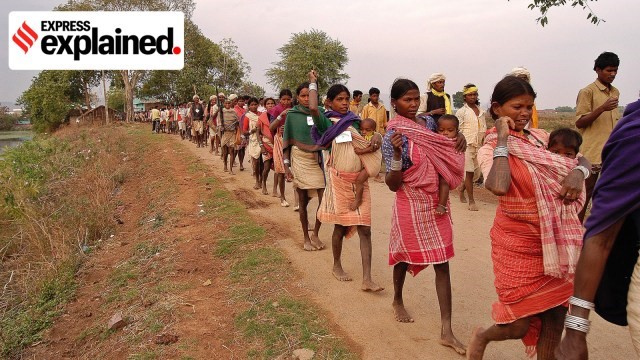Particularly Vulnerable Tribal Groups (PVTGs)

- 11 Sep 2025
In News:
- The Ministry of Tribal Affairs (MoTA) has requested the Registrar General and Census Commissioner of India (RGI) to enumerate Particularly Vulnerable Tribal Groups (PVTGs) separately in the upcoming Census.
- Aim: To capture population, households, and distinctive socio-economic and cultural features of PVTGs for better targeting of schemes such as the Pradhan Mantri Janjati Adivasi NyayMaha Abhiyan (PM JANMAN).
About PVTGs
- Definition: A sub-category of Scheduled Tribes (STs), considered the most disadvantaged among tribal communities.
- Origin: Concept recommended by the Dhebar Commission (1960–61) to address disparity within STs.
- Criteria for Identification:
- Declining/stagnant population
- Geographical isolation
- Pre-agrarian economy (hunting, gathering, shifting cultivation)
- Economic backwardness
- Low literacy
- Numbers:
- Initially 52 groups identified during the Fifth Five-Year Plan (1974–79).
- Later, 23 more groups added in 2006 → 75 PVTGs today.
- Spread: Across 18 states and the Andaman & Nicobar Islands.
Demographic Profile
- Estimated Population (2023 Survey): ~47.5 lakh PVTGs in India.
- Madhya Pradesh – 13.22 lakh (highest)
- Maharashtra – 6.7 lakh
- Andhra Pradesh – 5.18 lakh
- Smallest Groups: Sentinelese (Andaman & Nicobar Islands) with just 15 individuals.
- Largest Group: Baiga (Madhya Pradesh) – ~4.14 lakh population.
Habitat & Livelihoods
- Mostly live in remote forests, hilly regions, or islands with limited access to infrastructure.
- Livelihood sources:
- Hunting and gathering
- Shifting cultivation
- Non-Timber Forest Produce (NTFP) collection
- Livestock rearing
- Traditional artisan work
Cultural & Social Features
- Distinct cultural identities, practices, and languages.
- Often outside mainstream socio-economic and political processes.
- Many face critical health and education deficits.
Need for Separate Enumeration
- No separate count so far: PVTGs only enumerated under the general ST category; many grouped together under one nomenclature.
- Single-entry STs: Out of 75 PVTGs, 40 explicitly listed under Article 342 of the Constitution.
- Challenges: Current lists vary across states; some groups not separately listed in Census.
- Benefits of separate enumeration:
- Accurate population data for targeted schemes.
- Helps assess whether PVTG classification criteria remain relevant.
- Supports preservation of cultural identity.
- Identifies infrastructure gaps in health, education, and livelihoods.
Welfare Measures
- PM JANMAN Scheme (2023):
- Budget: ?24,104 crore.
- Coverage: More than 200 districts.
- Objective: Improve health, education, livelihoods, and basic amenities of PVTGs.
